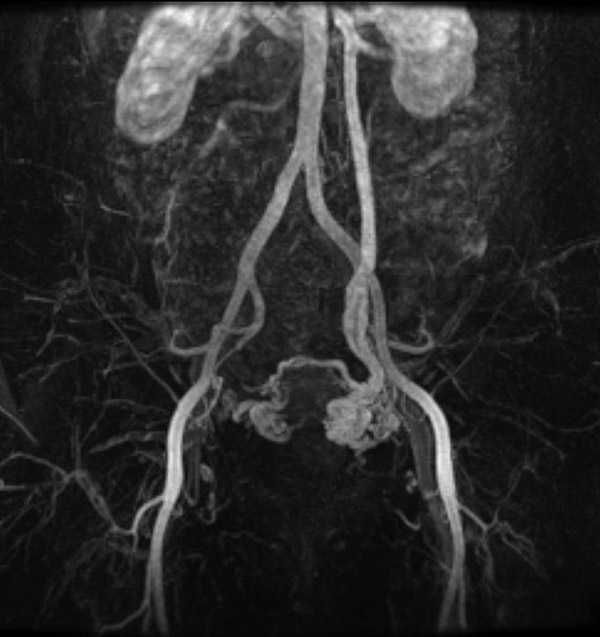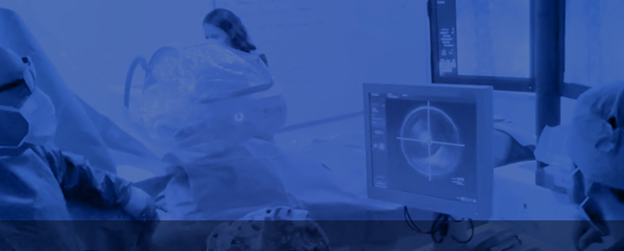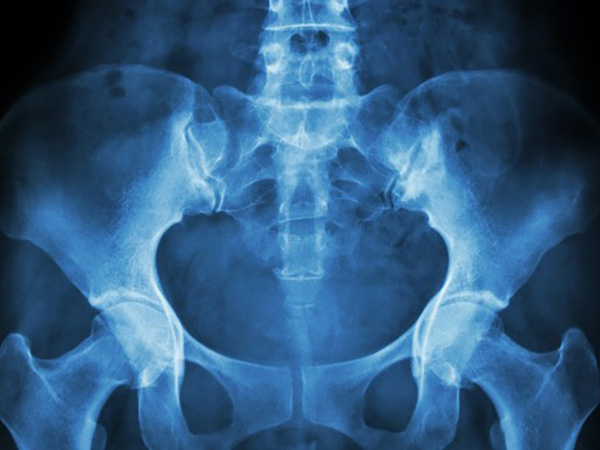Pelvic Congestion Syndrome (PCS) is a pelvic pain that is a commonly known condition found in women. It causes chronic pelvic pain in the lower part of your belly or abdomen. A woman may face Pelvic Congestion Syndrome when there are a few issues with the veins in her pelvic area.
According to Phlebolymphology.org: “From 2% to 10% of all gynecological office consultations are for pelvic pain, and nearly 20% of all laparoscopic procedures are performed for chronic pelvic pain. It is estimated that 10 million women suffer from this condition, with approximately 7 million who do not seek treatment.”

What Is Pelvic Congestion Syndrome?
In some women, the veins in their lower abdomen area stop working well, and as a result, blood starts to build up inside those veins. When this happens, the veins in your pelvic area enlarges and changes shape, causing blinding pain. The enlargement of those veins leads up to other symptoms. Pelvic Congestion Syndrome is usually seen in women of childbearing age or women who have given birth to more than one child.
What Causes Pelvic Congestion Syndrome?
Doctors and other healthcare providers are still trying to understand the possible causes of Pelvic Congestion Syndrome. Even though the ‘enlarged veins’ in a women’s pelvis system play a major role, many women have been seen with enlarged veins, yet they face no pelvic Congestion Syndrome symptoms. Like we said in the previous paragraph, childbearing age or pregnancy are phases in which there is a high increase for Pelvic Congestion Syndrome, and the reason to that is because, during the time a woman is pregnant, her veins enlarge in order to support the increased blood flow throughout her body. This can leave the enlarged veins permanently, ultimately leading up to the symptoms of Pelvic Congestion Syndrome.
Hormones have proven to play a vital role in Pelvic Congestion Syndrome. Estrogen (In females, helps develop and maintain both the reproductive system and female characteristics, such as breasts and pubic hair) makes veins enlarged/wider. However, this condition is not expected after menopause (time that marks the end of your menstrual cycles.) Estrogen levels after menopause are lower.
The Treatment for Pelvic Congestion Syndrome: Pelvic Congestion Embolization?
Before we get down to the topic, it is essential that you know what PCS Embolization means. Embolization solely is a minimally invasive treatment. Its job is to block one or more blood vessels or abnormal vascular channels. Now, PCS embolization is another “invasive treatment” for pelvic congestion syndrome. Pelvic Congestion Embolization helps relieve pain by using guidance and a catheter to close off abnormal vascular channels/veins so they can no longer enlarge with blood.

In an article posted at EvToday.com in April’2016, few symptoms one might face if suffering from Pelvic Congestion Syndrome were highlighted. The article read, “It is associated with a myriad of nonspecific symptoms, such as bloating, backache, dysmenorrhea, dyspareunia, bladder instability, and an irritable bowel; these are not infrequently associated with lower limb varicosities and hemorrhoids.”

Over the years, the advantages and side effects of Pelvic Congestion Embolization have been highlighted. While it has proven to be a safe procedure and tends to give relief to the patient, there is also a very slight risk of an allergic reaction to the contrast injection. We have highlighted some significant benefits and side effects one might face:
Pelvic vein/ovarian vein embolization is a safe procedure with relief of pain symptoms and improved varicose veins’ appearances.

Benefits:
- Embolization has proven to be effective in blocking enlarged veins.
- There is no need for an ‘open surgery.’ In fact, no surgical incision is needed—the patient gets injected with no need for stitches.
- Since Embolization is less invasive, there is a minor complication, and it has proven to be only a ‘day case’ at almost all hospitals.
- Embolization has proven to help many women within two weeks. The percentage resides along with the number of 83% to 85%.
Risks:
- Recurrence of Pelvic Congestion Syndrome can occur in up to 10%.
- As we know, any procedure that follows the placement of a catheter (a flexible tube) inside a blood vessel carries certain risks. The risks may include bruising, bleeding, or damage to the blood vessel.
- In order to complete the procedure, the ovaries get exposed to radiation. But it is important to remember that there has been no evidence that periods or fertility are affected by this particular exposure.
For further information, get in touch with Dr. Ayad Agha today.
About the Practice
Blending interventional and diagnostic radiology and primary care services with aesthetic medicine and spa treatments, IYA Medical in Scottsdale, Arizona, helps its patients achieve beauty, health, and happiness. Using scientifically proven products and treatments, the highly experienced and educated team of doctors helps you feel better from the inside out.
At IYA Medical, patients receive access to a combination of medical services and advanced treatments in a comfortable, state-of-the-art facility.
Committed to reducing the length of hospital stays, IYA Medical’s interventional radiology services, with advanced imaging, allow the team to precisely treat complex conditions, including cancer and cardiovascular disease with minimally invasive options.
The doctors offer back pain management, diagnosis, and treatment for joint pain, pelvic pain, and leg pain, including varicose vein removal, and offer the option of ports and catheters for long-term dialysis or chemotherapy treatment using minimally invasive solutions and image-guided surgery techniques.
For patient convenience, concierge medicine services give round-the-clock access to doctors and more exclusive benefits. Learn more about the medical services available at IYA Medical by calling the practice or to schedule an appointment at (480) 750-8130.

About Dr. Agha
Dr. Ayad Agha, DO brings an unmatched background including a fellowship in Vascular and Interventional Radiology and Interventional Oncology from the University of California-San Diego, a Doctorate of Pharmacy from The Ohio State University, a Masters in Nuclear Pharmacy from the University of Southern California, and a Medical Degree from Midwestern University College of Osteopathic Medicine.

Dr. Agha is certified by the American Board of Radiology, an associate professor of diagnostic and interventional radiology at the University of Arizona Medical School, a clinical professor of the health and science department at Barrett, The Honors College at Arizona State University and a medical consultant with product design in the field of interventional radiology.
A popular and renowned Interventional Radiologist, Dr. Agha is an expert in cutting-edge medical practice and well versed in utilizing stem cells, genomic testing, and vascular aesthetics.
His presence brings to IYA a host of services that can result in an enhanced quality of life – turning back the clock, whenever possible, on function, energy, and mobility. Among the initial services provided are cosmetic vein treatments, full-body scans as part of detailed wellness care, rejuvenating serums, and pain treatments.
Fellowship-trained and board-certified in vascular and interventional radiology at the University of California San Diego, he offers a unique approach to problem-solving. Dr. Agha has held leadership positions and trains physicians in private and academic settings. A frequent Phoenix Magazine Top Doc, he is at the forefront of the future of medicine and now brings this passion for educating clients and providers to IYA.
A long-time resident of Arizona, he is known as a true force of nature and is anxious to bring a new level of medical cosmetic and other related services to Scottsdale and surrounding communities.
Dr. Ayad Agha holds US patents in Surgical Methods Apparatus Designs, Biopsy Devices, Rotary Indexers, and Methods of Use.

